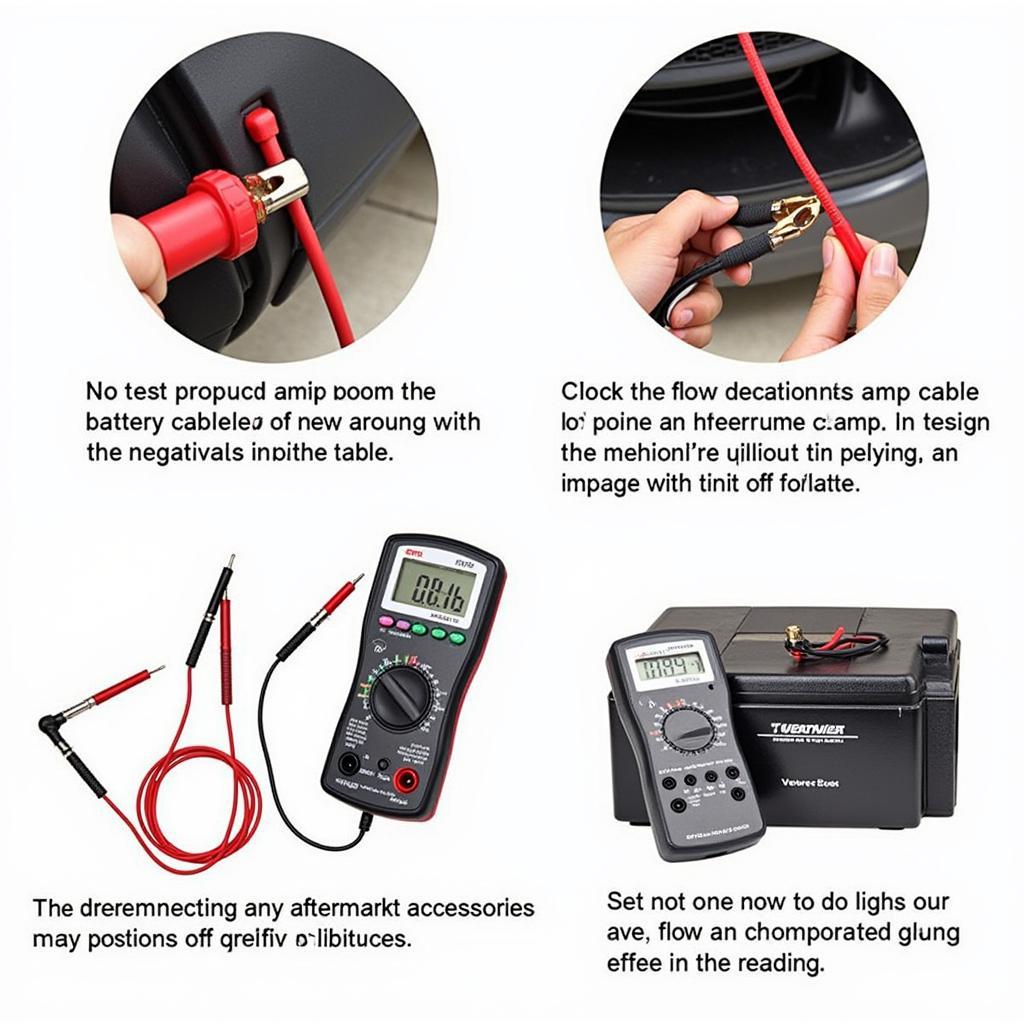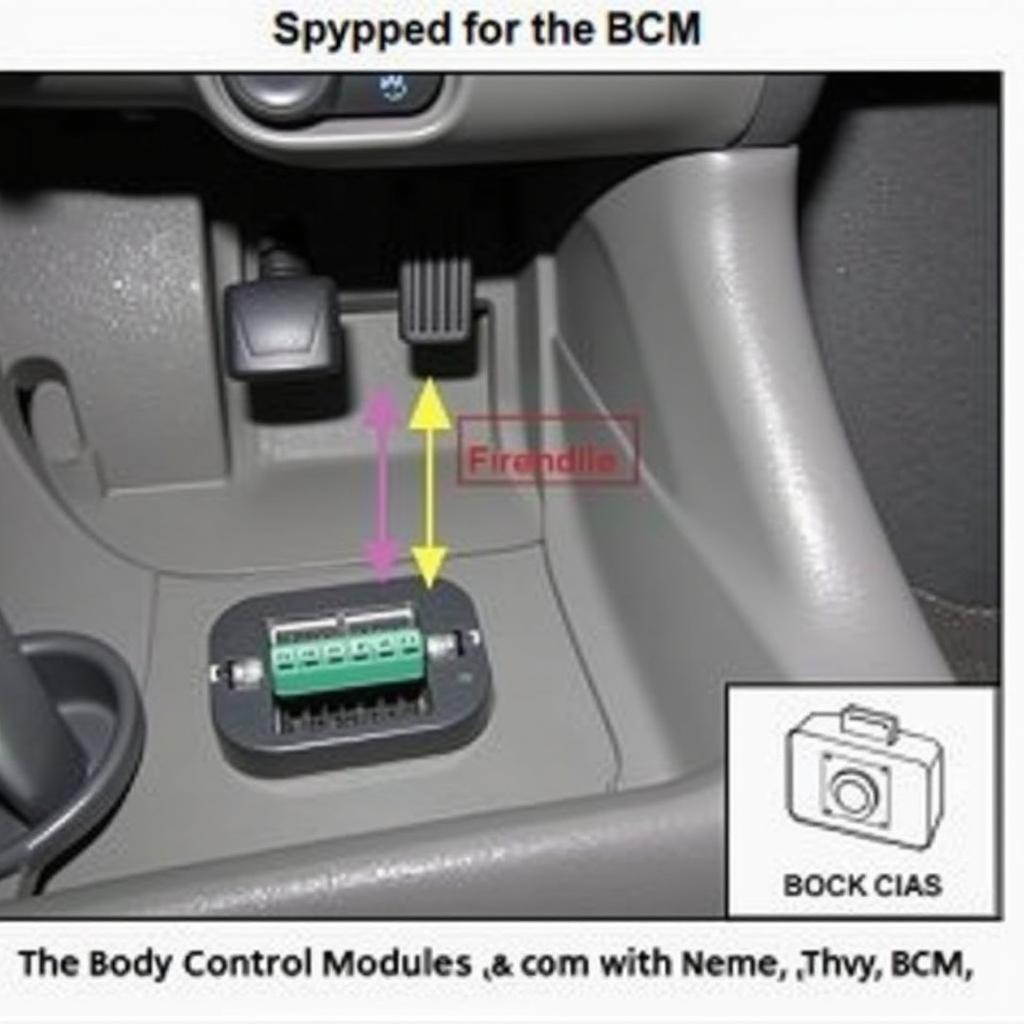A parasitic draw test with an amp clamp is a crucial diagnostic procedure for identifying and resolving electrical issues in modern vehicles. This test helps pinpoint components or systems that consume excessive power when the vehicle is off, often leading to a dead battery. Understanding how to perform this test correctly can save you time, money, and frustration.
 Parasitic Draw Test Setup with Amp Clamp
Parasitic Draw Test Setup with Amp Clamp
A common misconception is that a vehicle’s electrical system completely shuts down when the key is removed. In reality, certain systems like the alarm, clock, and computer modules continue to draw a small amount of current, known as parasitic draw. A significant increase in this draw indicates a problem. Using an amp clamp allows you to accurately measure this current without disconnecting the battery, preventing the loss of stored diagnostic trouble codes (DTCs).
Why Perform a Parasitic Draw Test with an Amp Clamp?
A dead battery is a frustrating experience. While a failing battery is often the culprit, a parasitic draw can also be the underlying issue. This test helps differentiate between a bad battery and an electrical fault, saving you from unnecessary battery replacements. A parasitic draw test with an amp clamp is a non-invasive method for quickly identifying excessive current drain, pinpointing the source of the problem, and preventing further damage to your vehicle’s electrical system.
How to Perform a Parasitic Draw Test with an Amp Clamp
Performing this test requires minimal tools: a digital multimeter with an amp clamp function and some patience. Here’s a step-by-step guide:
- Prepare the Vehicle: Ensure the vehicle is off, all doors are closed, interior lights are off, and any aftermarket accessories are disconnected. This isolates the factory electrical systems.
- Connect the Amp Clamp: Attach the amp clamp around the negative battery cable. Ensure the clamp is closed securely.
- Set the Multimeter: Set your multimeter to the DC amps setting.
- Observe the Reading: The initial reading may be high due to modules shutting down. Wait for the reading to stabilize. A normal parasitic draw is typically less than 50 milliamps (0.05 amps). A higher reading suggests a problem.
- Isolate the Circuit: Begin systematically removing fuses one at a time, observing the amp clamp reading after each removal. When the reading drops significantly, you have identified the circuit with the excessive draw.
- Pinpoint the Culprit: Once you’ve identified the circuit, consult your vehicle’s wiring diagram to locate all components within that circuit. Inspect each component for damage or malfunction.
If you experience a dead key fob, refer to these helpful resources: dead key fob car wont start. You can also find information on how to start car with dead key fob.
When Should I Perform a Parasitic Draw Test?
If you frequently experience a dead battery, suspect an electrical issue, or notice your vehicle’s electrical system behaving strangely, a parasitic draw test is recommended. This test can also be a valuable preventative maintenance step.
Interpreting the Results of a Parasitic Draw Test
A normal reading indicates a healthy electrical system. An elevated reading, however, points to an issue that requires further investigation. Don’t hesitate to consult a qualified automotive technician for assistance if needed.
“A common mistake is assuming a new battery solves the problem. Always test for a parasitic draw before replacing a battery,” says John Smith, a certified automotive electrical systems specialist with 20 years of experience.
Conclusion
Performing a parasitic draw test with an amp clamp is a simple yet powerful diagnostic tool that can save you time and money. By identifying excessive current drain early on, you can prevent costly repairs and keep your vehicle running smoothly. If you have any doubts or encounter difficulties, consulting a professional technician is always recommended, especially for complex electrical systems. Don’t let a parasitic draw leave you stranded with a dead battery – master the amp clamp test and take control of your car’s electrical health.
If your key fob is dead and your car won’t start, you can find more information on how to key fob dead car won t start and start car if key fob dead. If your key fob battery dead start car isn’t working, you can check those resources.


